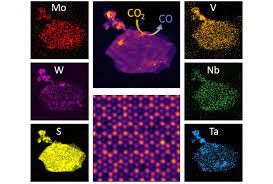
Breaking News
 "TEST Her First!" - Do This BEFORE You Get Married | Charlie Kirk
"TEST Her First!" - Do This BEFORE You Get Married | Charlie Kirk
 AI, Inevitability, & Human Sovereignty
AI, Inevitability, & Human Sovereignty
 Researchers Found Unvaccinated Children Healthier Than Vaccinated, Didn't Publish Findings
Researchers Found Unvaccinated Children Healthier Than Vaccinated, Didn't Publish Findings
 The Five Most Likely Outcomes From The Russian Drone Incursion Into Poland
The Five Most Likely Outcomes From The Russian Drone Incursion Into Poland
Top Tech News
 Tesla Megapack Keynote LIVE - TESLA is Making Transformers !!
Tesla Megapack Keynote LIVE - TESLA is Making Transformers !!
 Methylene chloride (CH2Cl?) and acetone (C?H?O) create a powerful paint remover...
Methylene chloride (CH2Cl?) and acetone (C?H?O) create a powerful paint remover...
 Engineer Builds His Own X-Ray After Hospital Charges Him $69K
Engineer Builds His Own X-Ray After Hospital Charges Him $69K
 Researchers create 2D nanomaterials with up to nine metals for extreme conditions
Researchers create 2D nanomaterials with up to nine metals for extreme conditions
 The Evolution of Electric Motors: From Bulky to Lightweight, Efficient Powerhouses
The Evolution of Electric Motors: From Bulky to Lightweight, Efficient Powerhouses
 3D-Printing 'Glue Gun' Can Repair Bone Fractures During Surgery Filling-in the Gaps Around..
3D-Printing 'Glue Gun' Can Repair Bone Fractures During Surgery Filling-in the Gaps Around..
 Kevlar-like EV battery material dissolves after use to recycle itself
Kevlar-like EV battery material dissolves after use to recycle itself
 Laser connects plane and satellite in breakthrough air-to-space link
Laser connects plane and satellite in breakthrough air-to-space link
 Lucid Motors' World-Leading Electric Powertrain Breakdown with Emad Dlala and Eric Bach
Lucid Motors' World-Leading Electric Powertrain Breakdown with Emad Dlala and Eric Bach
 Murder, UFOs & Antigravity Tech -- What's Really Happening at Huntsville, Alabama's Space Po
Murder, UFOs & Antigravity Tech -- What's Really Happening at Huntsville, Alabama's Space Po
New five-metal alloy makes for 2D catalyst to convert CO2 into fuels

The new alloy belongs to a class of materials called transition metal dichalcogenides (TMDCs), which are, as the name suggests, made up of combinations of transition metals and chalcogens. Extremely thin films of TMDCs have recently shown promise in a range of electronic and optical devices, but researchers on the new study wondered if they could also be used as catalysts for chemical reactions.
The thinking goes that because reactions occur on the surface of a catalyst, materials with high surface areas will be more effective catalysts. And as sheets only a few atoms thick, TMDCs are almost nothing but surface area.



